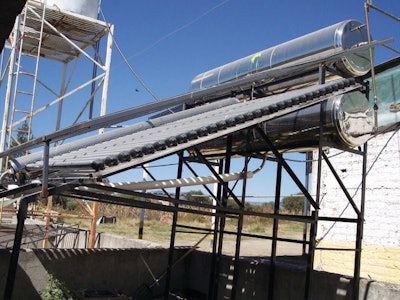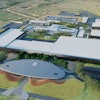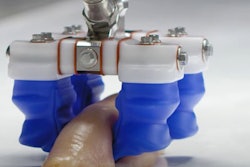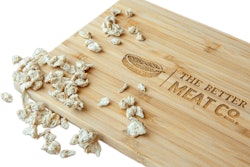
There are many areas in poultry processing and rendering plants where working smarter could bring a variety of benefits. This smart working can be applied not only to day-to-day operations but also to the use of physical infrastructure, benefitting workers and ultimately the company.
Boilers
Boilers supply steam to the scalders and for cleaning and disinfection. Additionally, they supply the cooker used for rending offal. When plants have both a large and a small boiler, it is the large one that supplies steam on a daily basis, with the smaller being brought into action should the larger fail.
The scalders and the by-products plant are supplied with steam via a shared network of pipes.
The temperatures needed to scald chickens are relatively low, meaning that boilers could be replaced by solar water heaters. Even on cloudy days, solar heaters can heat water to 80 C, and their operation is simple making them more reliable than traditional boilers. Moreover, they are economical, and their efficiency means that they can be easily adjusted to the needs of each plant.

The typical two-boiler set up may not be the most efficient way to provide steam to the processing and sub-products plants. | Eduardo Cervantes López
Vacuum pumps
Vacuum pumps are used for a variety of purposes. For example, the transport of blood from the bleed tunnel to the rendering plant, with vent cutter guns for the removal of organs, and with guns for the removal of lungs.
When problems occur with the vent or lung, hand tools must be used, and this may mean bringing in workers from another areas. Should the bleed tunnel not be continuously drained, blood can run onto the floor.
A solution to this would be to have an independent team with their own suction guns that connect to the main network.
Air compressors
Air compressors supply air to the vent cutter and lung guns. Additionally, they also supply semi-automatic whole chicken baggers, and whole chicken, cut up and deboned automatic tray packers. Some plants work with a single air distribution network connecting all of these operations.
Autonomous service units at evisceration and packing with adjustable air compressors could achieve savings. Each would have their own air compressors tailored to individual needs.
If, for example, an extra shift is needed in the packing section a the end of the day, rather than use the main compressor, which is bigger and consumes more energy, the local compressor could be used.
Maintenance
Due to the high level of technology in processing machines, careful maintenance programs need to be followed to ensure their smooth functioning. When two shifts a day are worked, operational controls must be particularly strict to prevent downtime the following day. Complicated maintenance tasks tend to be planned for the weekends and public holidays.
Despite careful organization and teams that are experienced and well-prepared, situations arise that extend the working day, impacting plant and workers’ professional and family lives.
In the 4.0 era, with its various technological developments across fields including communications and robotics, various options have arisen, meaning that these disruptions can be minimized.
Working practices
The idea of “smart work” has emerged as a management practice, characterized by permanent connectivity, dedicated social networks, real-time monitoring, creativity and innovation across all areas of a company.
Smart work gives workers flexibility to perform their duties while increasing the level of responsibility needed for an organization’s teams to function successfully. This is known as self-management, and its success is supported by the entire team working together to evaluate the results achieved. Each activity is considered a project.
To enable this approach to function, all employees, whether managerial or operational, should fully understand the various aspects of the business, including: processing, quality control, maintenance, purchasing, storage and human resources.
A technological infrastructure must be in place to avoid supervisory activities becoming exhausting and to detail analysis. Once operational, work can be organized with working days assigned to staff according to preference. With staff given the ability to perform to their highest levels, the main concern of the company becomes worker safety.
Large poultry companies may have several processing plants, not only in their home territories but also overseas, with a team of professionals responsible for evaluating various operations across these sites. Given the multi-location nature of many companies, these professionals may spend a lot of time away from home.
However, virtual visits can mean less time away, also leading to reducing the time unproductively spent in airports and travelling.
In many countries, monthly slaughter cycles have busy and quieter periods, and it could be said there are some similarities with the high and low seasons of the airline industry. This sector takes advantage of its quieter times to carry out major maintenance. This approach could be an option for the poultry industry, helping to eliminate any disruptions that may occur during busier times.
Despite the disruptions that the poultry sector has experienced during the pandemic, there are tools and management concepts that can make accomplishing daily tasks easier. Achieving this depends on the degree to which we are prepared to adjust and change our attitudes.

















